Milwaukee 8988-20 Handleiding
Milwaukee
Hittepistool
8988-20
Bekijk gratis de handleiding van Milwaukee 8988-20 (20 pagina’s), behorend tot de categorie Hittepistool. Deze gids werd als nuttig beoordeeld door 28 mensen en kreeg gemiddeld 4.5 sterren uit 14.5 reviews. Heb je een vraag over Milwaukee 8988-20 of wil je andere gebruikers van dit product iets vragen? Stel een vraag
Pagina 1/20

Cat. No. / No de cat.
8988-20
VARIABLE TEMP. HEAT GUN
PISTOLET THERMIQUE À TEMPÉRATURE VARIABLE
PISTOLA DE CALOR DE TEMPERATURA VARIABLE
OPERATOR'S MANUAL
MANUEL de L'UTILISATEUR
MANUAL del OPERADOR
WARNING To reduce the risk of injury, user must read and understand operator's manual.
AVERTISSEMENT An de réduire le risque de blessures, l'utilisateur doit lire et bien
comprendre le manuel.
ADVERTENCIA Para reducir el riesgo de lesiones, el usuario debe leer y entender el manual.

2
GENERAL POWER TOOL
SAFETY WARNINGS
WARNING
Read all safety warnings, instruc-
tions, illustrations and specica-
tions provided with this power tool. Failure to
follow all instructions listed below may result in
electric shock, re and/or serious injury. Save all
warnings and instructions for future reference.
The term "power tool" in the warnings refers to your
mains-operated (corded) power tool or battery-oper-
ated (cordless) power tool.
WORK AREA SAFETY
• Keep work area clean and well lit. Cluttered or
dark areas invite accidents.
• Do not operate power tools in explosive atmo-
spheres, such as in the presence of ammable
liquids, gases or dust. Power tools create sparks
which may ignite the dust or fumes.
• Keep children and bystanders away while operat-
ing a power tool. Distractions can cause you to lose
control.
ELECTRICAL SAFETY
• Power tool plugs must match the outlet. Never
modify the plug in any way. Do not use any
adapter plugs with earthed (grounded) power
tools. Unmodied plugs and matching outlets will
reduce risk of electric shock.
• Avoid body contact with earthed or grounded
surfaces, such as pipes, radiators, ranges and
refrigerators. There is an increased risk of electric
shock if your body is earthed or grounded.
• Do not expose power tools to rain or wet condi-
tions. Water entering a power tool will increase the
risk of electric shock.
• Do not abuse the cord. Never use the cord for
carrying, pulling or unplugging the power tool.
Keep cord away from heat, oil, sharp edges or
moving parts. Damaged or entangled cords increase
the risk of electric shock.
• When operating a power tool outdoors, use an
extension cord suitable for outdoor use. Use of
a cord suitable for outdoor use reduces the risk of
electric shock.
• If operating a power tool in a damp location is
unavoidable, use a ground fault circuit interrupter
(GFCI) protected supply. Use of an GFCI reduces
the risk of electric shock.
PERSONAL SAFETY
• Stay alert, watch what you are doing and use
common sense when operating a power tool. Do
not use a power tool while you are tired or under
the inuence of drugs, alcohol or medication. A
moment of inattention while operating power tools
may result in serious personal injury.
• Use personal protective equipment. Always
wear eye protection. Protective equipment such
as a dust mask, non-skid safety shoes, hard hat or
hearing protection used for appropriate conditions
will reduce personal injuries.
• Prevent unintentional starting. Ensure the switch
is in the o-position before connecting to power
source and/or battery pack, picking up or carrying
the tool. Carrying power tools with your nger on
the switch or energizing power tools that have the
switch on invites accidents.
• Remove any adjusting key or wrench before
turning the power tool on. A wrench or a key left
attached to a rotating part of the power tool may
result in personal injury.
• Do not overreach. Keep proper footing and
balance at all times. This enables better control
of the power tool in unexpected situations.
• Dress properly. Do not wear loose clothing or
jewelry. Keep your hair and clothing away from
moving parts. Loose clothes, jewelry or long hair
can be caught in moving parts.
• If devices are provided for the connection of
dust extraction and collection facilities, ensure
these are connected and properly used. Use of
dust collection can reduce dust-related hazards.
• Do not let familiarity gained from frequent use
of tools allow you to become complacent and
ignore tool safety principles. A careless action can
cause severe injury within a fraction of a second.
POWER TOOL USE AND CARE
• Do not force the power tool. Use the correct power
tool for your application. The correct power tool
will do the job better and safer at the rate for which
it was designed.
• Do not use the power tool if the switch does not
turn it on and o. Any power tool that cannot be
controlled with the switch is dangerous and must be
repaired.
• Disconnect the plug from the power source and/
or remove the battery pack, if detachable, from
the power tool before making any adjustments,
changing accessories, or storing power tools.
Such preventive safety measures reduce the risk of
starting the power tool accidentally.
• Store idle power tools out of the reach of children
and do not allow persons unfamiliar with the
power tool or these instructions to operate the
power tool. Power tools are dangerous in the hands
of untrained users.
• Maintain power tools and accessories. Check
for misalignment or binding of moving parts,
breakage of parts and any other condition that
may aect the power tool’s operation. If damaged,
have the power tool repaired before use. Many
accidents are caused by poorly maintained power
tools.
• Keep cutting tools sharp and clean. Properly
maintained cutting tools with sharp cutting edges
are less likely to bind and are easier to control.
• Use the power tool, accessories and tool bits
etc. in accordance with these instructions,
taking into account the working conditions and
the work to be performed. Use of the power tool
for operations dierent from those intended could
result in a hazardous situation.
• Keep handles and grasping surfaces dry, clean
and free from oil and grease. Slippery handles and
grasping surfaces do not allow for safe handling and
control of the tool in unexpected situations.
SERVICE
• Have your power tool serviced by a qualied
repair person using only identical replacement
parts. This will ensure that the safety of the power
tool is maintained.

3
IMPORTANT SAFETY INSTRUCTIONS
HEAT GUNS
Read These Instructions
• Know your work environment. Hidden areas such
as behind walls, ceilings, oors, sot boards and other
panels may contain ammable materials that may ignite
when using the heat gun in these locations. Ignition of
these materials may not be readily apparent and could
result in property damage and personal injury. Check
these areas before applying heat. If in doubt, use an
alternate method. Pausing or lingering in one spot may
ignite the panel or the material behind it. Keep heat gun
moving to avoid excessive temperatures.
• Do not direct the heat gun air airow at clothing, hair
or other body parts. Do not use as a hair dryer. Heat
guns can produce 1150°F (621°C) or more of ameless
heat at the nozzle. Contact with the air stream could
result in personal injury.
• Do not use near ammable liquids or in explosive
atmospheres, such as in the presence of fumes,
gases or dust. The ameless heat from the heat gun
may ignite the dust or fumes. Remove materials or debris
that may become ignited from work area.
• Shield materials around the heated area to prevent
property damage or re.
• Keep a re extinguisher nearby. Heat guns may ignite
ammable materials left in the work area.
•
WARNING
Hot Surfaces. Always hold the heat
gun by the plastic enclosure. Do not
touch nozzle, accessory tips or store heat gun until
the nozzle has cooled to room temperature. The
metal nozzle requires approximately 20 minutes to cool
before it can be touched. Contact with the nozzle or
accessory tip could result in personal injury. Place the
heat gun in a clear area away from combustible materi-
als while cooling to prevent ammable materials from
igniting.
• Do not cut o airow by placing nozzle too close
to workpiece. Keep intake vents clean and clear of
obstructions. Restricting airow may cause the heat gun
to overheat.
• Place the heat gun on a stable, level surface when not
hand held. Use the support pads or support stand.
Place cord in a position that won’t cause the heat gun
to tip over.
• Do not leave the heat gun unattended while running
or cooling down. Inattention invites accidents.
• Store indoors in a dry location. Do not expose to rain
or moisture.
• Do not direct airow directly on glass. The glass may
crack and could result in property damage or personal
injury.
• Always use common sense and be cautious when
using tools. It is not possible to anticipate every
situation that could result in a dangerous outcome.
Do not use this tool if you do not understand these
operating instructions or you feel the work is beyond
your capability; contact Milwaukee Tool or a trained
professional for additional information or training.
• Maintain labels and nameplates. These carry
important information. If unreadable or missing,
contact a MILWAUKEE service facility for a free
replacement.
• WARNING Some dust created by power sanding,
sawing, grinding, drilling, and other construction
activities contains chemicals known to cause cancer,
birth defects or other reproductive harm. Some
examples of these chemicals are:
• lead from lead-based paint
• crystalline silica from bricks and cement and other
masonry products, and
• arsenic and chromium from chemically-treated
lumber.
Your risk from these exposures varies, depending on
how often you do this type of work. To reduce your
exposure to these chemicals: work in a well ventilated
area, and work with approved safety equipment, such
as those dust masks that are specially designed to
lter out microscopic particles.
IMPORTANT SAFETY INSTRUCTIONS
FOR REMOVING PAINT
WARNING
Use extreme care when stripping paint.
Peelings, residue and vapors of paint
may contain lead, which is POISONOUS. Pre-1977
paint may contain lead and paint made before 1950
is likely to contain lead. Hand to mouth contact with
paint peelings or residue from pre-1977 paint may
result in lead ingestion. Exposure to even low levels of lead
can cause irreversible brain and nervous system
damage. Young and unborn children are especially
vulnerable to lead poisoning. DO NOT REMOVE
LEAD-BASED PAINT WITH A HEAT GUN. Before
beginning your work, determine whether the paint you
are removing contains lead. A local health department
or a professional who uses a paint analyzer can check
the paint for lead content. LEAD-BASED PAINT
SHOULD BE REMOVED ONLY BY A PROFES-
SIONAL.
Persons removing paint should follow
these guidelines:
• Work in a well ventilated area. If possible, move the
workpiece outdoors. If working indoors, open windows
and place an exhaust fan in a window. Be sure the fan
is moving air from inside to outside. Proper ventila-
tion will reduce the risk of inhaling chemicals found
in the fumes or dust created by using a heat gun.
• Remove or cover any carpets, rugs, furniture,
clothing, cooking utensils and air ducts to prevent
property damage from the paint peelings.
• Place drop cloths in the work area to catch paint
scrapings. Wear protective clothing such as hats,
extra work shirts and overalls. Paint scrapings may
contain chemicals that are hazardous.
• Work in one room at a time. Remove furnishings or
cover them and place in the center of the room. Seal
doorways with drop cloths to seal work area from the
rest of the building.
• Children, pregnant or potentially pregnant women,
and nursing mothers should not be near work area
until all work is completed and work area is cleaned
thoroughly.
• Wear a dust respirator mask or a dual lter (dust
and fume) respirator mask which has been approved
by the Occupational Safety and Health Administration
(OSHA), the National Institute of Safety and Health
(NIOSH), or the United States Bureau of Mines. These
masks and replaceable lters are readily available at
major hardware stores. Be sure the mask ts. Beards
and facial hair may keep masks from sealing properly.
Change lters often. DISPOSABLE PAPER MASKS
ARE NOT ADEQUATE.
• Use caution when operating the heat gun. Keep the
heat gun moving to prevent excessive temperatures.
Excessive heat can cause paint and other materials
to burn and cause fumes, which may be inhaled by
the operator.
Product specificaties
| Merk: | Milwaukee |
| Categorie: | Hittepistool |
| Model: | 8988-20 |
Heb je hulp nodig?
Als je hulp nodig hebt met Milwaukee 8988-20 stel dan hieronder een vraag en andere gebruikers zullen je antwoorden
Handleiding Hittepistool Milwaukee
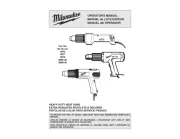
15 Juli 2025
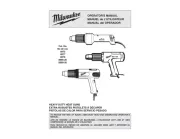
14 Juli 2025
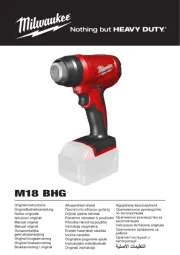
14 April 2025

9 Augustus 2023

15 Maart 2023

20 Februari 2023
Handleiding Hittepistool
- Einhell
- Vonroc
- Graphite
- Qlima
- Daewoo
- Meister Craft
- Skil
- Ozito
- Hitachi
- Panasonic
- Bavaria
- Hikoki
- Makita
- Stanley
- Powerplus
Nieuwste handleidingen voor Hittepistool
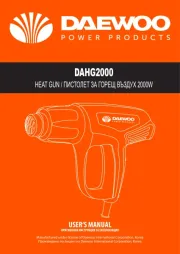
5 Juli 2025
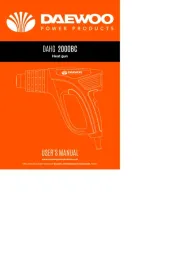
5 Juli 2025
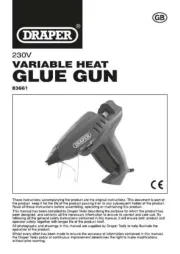
30 Mei 2025
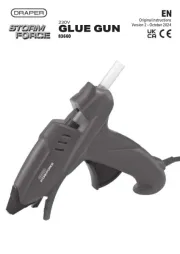
30 Mei 2025
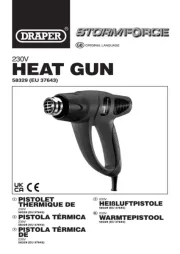
30 Mei 2025
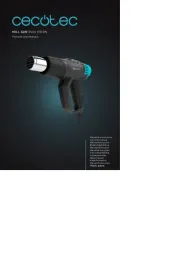
11 April 2025
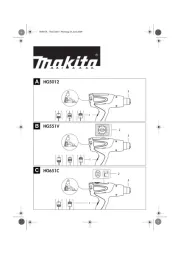
28 Maart 2025

28 Maart 2025
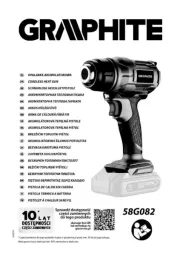
27 Maart 2025
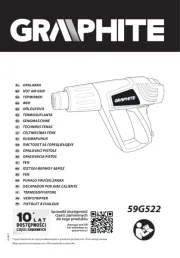
27 Maart 2025